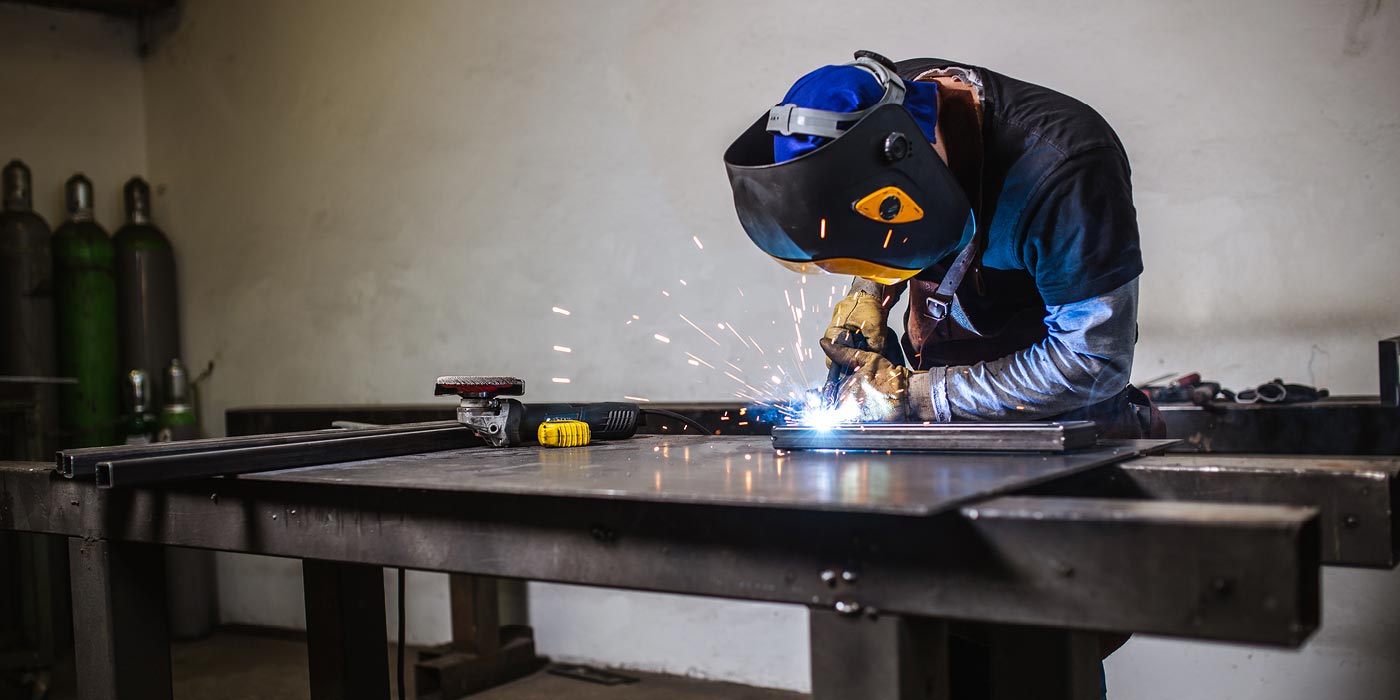- Home
- Loss Control
- Loss Control Insights
- Don’t overlook these 5 fire hazards
“There is nearly an unlimited number of ways that fires can start,” says David Whisman, EMC Regional Risk Improvement Director. Fire hazards in the workplace can be found in every area of a business, and the causes are diverse. They range from faulty wiring or machinery to dust, chemicals, hot work, and poor housekeeping. Since fires put lives and property at risk, managers and employees need to be on constant alert.
Though there are countless ways a fire can start, David focuses on five areas you might not realize are potential hazards.
1. Hot work, including welding, cutting, and brazing
When sparks fly, there’s a danger of nearby combustible materials catching on fire. If these jobs aren’t performed often, it can be easy to forget to remove materials that may cause a fire.
Just because you’re outside doesn’t mean the work area is safer than inside. One of the largest wildfires in David’s region involved a cutting torch used outside. “Workers forget that when setting up a job outside, they must position the work area far enough from the building so sparks don’t catch the building on fire or cause damage in other ways,” says David.
2. Electrical distribution and lighting
Carelessness can lead to overloaded outlets, incorrect use of extension cords, and blocked electrical panels. A lesser-known danger comes from metal-halide tungsten halogen light bulb burnouts, especially in warehouses or supply closets with stacks of cardboard boxes.
David explains, “There is a larger tungsten component in older industrial lights. When it burns out, that piece of hot metal can fall from the ceiling onto cardboard boxes.” The tungsten is hot enough to catch the cardboard on fire within minutes.-. Stay safe by making sure you maintain bulbs and check your fire safety system as required by the manufacturer.
3. Waste containers
Using the wrong type of container or leaving it open can cause a fire. An EMC policyholder had a large loss while storing greasy and oily rags due to their flammable vapors. Leaving the cover open just a crack can allow enough oxygen for combustion. Tightly covering the container prevents spontaneous fires from starting as the closed cover keeps the fuel-to-oxygen ratio at a level that dampens fire risk.
4. Defective detectors, including smoke, gas, and carbon monoxide detectors
All detectors have a limited life span. “Some units reach end-of-life in as little as 5 to 10 years. And if a business moves into an existing building with detectors already in place, checking their dates is generally not a priority. They could be expired, and you wouldn’t know unless you check,” says David. The expiration date is typically located on a label on the bottom of the unit.
5. Kitchen safety
Restaurant kitchens are full of potential dangers. According to David, three common problems are inadvertently disabling the fire protection system for grill, fryer and vent functions (not cleaning grease filters regularly), and installing the incorrect type of fire extinguishers in the wrong places.
A kitchen’s fire protection system is set up with nozzles close to the fryers and an extinguishing agent right above the grill or the fryers. If the cooking equipment gets moved but the fire protection system isn’t reconfigured to fit, the entire system is in danger.
Because fires can start in the ductwork, cleaning grease filters in the hood is a critical task. Even though it’s not as visible as in other kitchen areas, cleaning grease filters should be a regular part of your routine inspection and preventive maintenance plan.
Fire extinguishers can be tricky to get right. You might need several types–or extinguishers that cover several classes in one extinguisher. Extinguisher class options are
- A for wood and paper fires
- B for flammable liquids like grease
- C for electrical fires
- D for flammable metals
- K for cooking oil
Fire extinguishers won’t be helpful if they’re not working or nearby. All extinguishers must be inspected regularly to ensure they’re accessible, in the right location, and pressurized. They should be located as close as possible to where they might be needed. Find more details about extinguishers in OSHA’s e-tool and regulations.
Get in touch
Need help? We’re here for you! Whether you have questions or need personalized assistance, your local office is ready to support you.
Loss Control Insights
Stay informed with the latest news and receive actionable safety tips, all carefully curated by our team of experts.
